Occupational Safety Training for Air Filter Manufacturing
99,000 ₫
Note: The above price is calculated per person and may vary depending on the number of trainees participating in the course and market fluctuations. For more accurate pricing information, please refer to the price list or contact our consultants directly.
Occupational safety is an important issue in air filter manufacturing factories and needs to be addressed promptly to ensure the health and safety of workers, as well as to enhance the reputation of businesses. The Occupational Safety Training course is an effective solution to raise awareness about accident prevention for workers involved in air filter production.
Table of Contents
Toggle1. Overview of Air Filters
a. What is an air filter?
An air filter is an important component in the internal combustion engine system of vehicles, responsible for cleaning the air before it is drawn into the combustion chamber. The main function of the air filter is to prevent dust, sand particles, and other impurities from entering the engine, helping to protect internal engine parts from wear and damage.
Air filters are usually made from materials such as filter paper, sponge, or synthetic fabric and are designed to be replaceable or cleaned periodically. When the air filter becomes dirty or clogged, engine performance may decrease, fuel consumption may increase, and the engine may operate unstably. Therefore, regular inspection and replacement of air filters are crucial to ensure efficient and durable engine operation.
There are many types of air filters, including dry paper filters, oil filters, and foam filters. Each type has its own characteristics and uses, suitable for different engines and operating conditions. Choosing and maintaining the right air filter not only prolongs engine life but also improves fuel efficiency and reduces environmental emissions.

b. Machinery for air filter production
- Filter material cutting machines:
- Filter paper cutting machine: Used to cut filter paper into desired sizes and shapes.
- Non-woven fabric cutting machine: Used to cut non-woven fabrics for foam or oil air filters.
- Folding machines:
- Filter paper folding machine: Creates folds in the filter paper to increase the filtration surface area, enhancing filtration efficiency.
- Automatic folding machine: Used to automatically fold various filter materials.
- Gluing and assembly machines:
- Automatic gluing machine: Used to glue and assemble layers of filter materials together.
- Filter frame assembly machine: Combines filter materials with frames to create complete products.
- Pressing and shaping machines:
- Heat press machine: Uses heat to press and shape filter material layers onto the filter frame.
- Hydraulic press machine: Applies pressure to shape and bond air filter components.
- Quality inspection machines:
- Airflow testing machine: Measures airflow capacity through the air filter to ensure filtration performance.
- Mechanical strength testing machine: Checks the durability and mechanical strength of air filters under different operating conditions.
- Packaging machines:
- Automatic packaging machine: Packages air filters into complete product packs ready for shipping and sale.

c. Famous air filter manufacturing companies
- K&N Engineering:
- K&N is a well-known American brand specializing in high-performance air filters for cars, motorcycles, and other vehicles. K&N products are known for excellent filtration, long lifespan, and reusability after cleaning.
- Mann+Hummel:
- A German brand globally renowned for high-quality air filters for cars, trucks, and industrial applications. Mann+Hummel pioneers the development of modern and effective filtration technologies.
- Bosch:
- Bosch, another German brand, is famous not only for electronics and power tools but also for high-quality air filters, praised for durability and filtration performance.
- Fram:
- Fram is a long-established American brand supplying air filters, oil filters, and fuel filters for cars and other vehicles. Fram products are popular for their reasonable prices and consistent quality.
- Denso:
- Denso, a Japanese brand, is known for high-quality air filters and automotive parts. Denso air filters are designed to meet strict performance and durability standards.
- ACDelco:
- A General Motors (GM) brand offering air filters, oil filters, and other parts for GM vehicles and many other types of vehicles. ACDelco is known for high quality and reliability.
- Purolator:
- Purolator is an American brand specializing in filtration products, including air filters for cars and trucks. Purolator products are known for effective filtration and long service life.
- Hengst:
- Hengst is a German brand famous for premium filtration products for cars, trucks, and industrial applications. Hengst emphasizes quality and performance for each product.

d. Specific jobs in an air filter manufacturing factory
Group 1
- Executive director, deputy executive director, department heads in the air filter manufacturing factory.
Group 2
- Safety officers: manage safety within the factory, design safety procedures, supervise and enforce employees’ compliance with safe work processes.
Group 3
- Operate filter paper and non-woven fabric cutting machines, ensuring correct size and shape as required.
- Operate folding machines to create folds in filter materials to increase filtration surface area.
- Use automatic gluing machines to glue layers of filter materials together.
- Assemble filter materials into plastic or metal frames, ensuring parts are securely connected.
- Operate heat press machines to press and shape filter material layers onto filter frames.
- Use hydraulic press machines to ensure parts are tightly bonded and correctly shaped.
- Use airflow testing machines to measure airflow capacity through the air filter.
- Operate automatic packaging machines to pack air filters into complete product packages.
Group 4
- Office work, services, sales, marketing.
- Production management, quality management, human resources management, material management, financial accounting management.
- Research and development of new products, product packaging design.
2. Overview of occupational safety training for air filter production
In this article, we focus on issues related to Group 3 because Group 3 directly participates in the production process and faces the highest occupational safety risks. For information about other groups, see here.
a. What is Group 3 occupational safety training?
- Group 3 occupational safety training consists of sessions that equip workers with awareness on how to prevent workplace accidents.
- The training helps workers recognize and avoid hazards, reducing risks of accidents during work.
REGISTER FOR OCCUPATIONAL SAFETY TRAINING SERVICE
b. Training duration
Initial safety training duration
- Total training time is at least 24 hours, including examination time.
- 8 hours of theory on safety policies and occupational hygiene laws.
- 8 hours of theory on basic occupational safety and hygiene knowledge.
- 4 hours of theory on specialized training content.
- 2 hours of practice on specialized training content.
- 2 hours of theoretical final exam.
The safety training center will schedule the sessions depending on workers’ availability. Usually, there are 6 training sessions over 3 days if the company arranges continuous study time.
Periodic safety training duration
- Before the occupational safety card expires, workers wishing to renew must attend periodic occupational safety training, with the periodic training duration at least 50% of the initial training duration.
Explanation: total periodic occupational safety training time is at least 12 hours, including examination. After completing the periodic training and passing the exam, workers will be reissued or extended their occupational safety card.
c. Training content
| No. | TRAINING CONTENT | TRAINING DURATION (HOURS) | |||
| Total | Including | ||||
| Theory | Practice | Exam | |||
| I | System of policies and laws on occupational safety and hygiene | 8 | 8 | 0 | 0 |
| 1 | Overview of legal documents system on occupational safety and hygiene. | 6 | 6 | ||
| 2 | Standards and technical regulations on occupational safety and hygiene. | 1 | 1 | ||
| 3 | Specific regulations by state management agencies on occupational safety and hygiene when constructing, expanding or renovating facilities, machinery, equipment, materials, and substances with strict safety and hygiene requirements. | 1 | 1 | ||
| II | Basic knowledge of occupational safety and hygiene | 8 | 8 | 0 | 0 |
| 1 | Basic knowledge of hazards and harmful factors at the workplace. | 4 | 4 | ||
| 2 | Methods to improve working conditions. | 1 | 1 | ||
| 3 | Safety culture in production and business. | 1 | 1 | ||
| 4 | Rights and responsibilities of employers and employees; policies and regimes on occupational safety and hygiene for employees; roles and duties of safety and hygiene network and staff. | 1 | 1 | ||
| 5 | Safety and hygiene regulations, safety signs, instructions, use of safety equipment and personal protective equipment; first aid skills, occupational disease prevention. | 1 | 1 | ||
| III | Specialized training content | 6 | 4 | 2 | 0 |
| Comprehensive knowledge of machinery, equipment, hazardous substances; risk analysis, management, safe working procedures with machines, equipment, and substances with strict safety requirements. | 6 | 4 | 2 | ||
| IV | Final training exam on occupational safety | 2 | 2 | 0 | 0 |
| Total | 24 | 22 | 2 | ||
See more training contents of the 6 groups
d. Occupational safety card
After completing the occupational safety training and passing the exam, workers will be issued an occupational safety card (commonly known as Group 3 occupational safety certificate).
The Group 3 safety card clearly shows information such as full name, date of birth, specific job and working environment, training duration, red stamp, and signature confirming training completion.
According to the regulations on card issuance specified in Clause 2 of Article 24 of Decree 44/2016/ND-CP, there are two cases:
- If the employer and employee have a labor contract, the employer must sign, stamp, and countersign the safety card after the employee completes the training and passes the exam.
- If the worker is freelance or seasonal without a labor contract, the training unit must sign, stamp, and countersign the safety card after the worker completes the training and passes the exam.

3. Identifying Hazards Affecting Workers in Air Filter Production
The air filter production process may involve several hazards for workers that need to be recognized and managed to protect their health and safety. Below are some key hazards commonly found in air filter manufacturing:
- Dust and fine particles: Processing and handling materials such as filter paper, non-woven fabrics, and fiberglass can generate dust and fine airborne particles. These particles can remain suspended in the air and be inhaled by workers without proper protective masks. Air filter dust can irritate the respiratory tract, cause pneumonia, and other health problems if exposure is prolonged and unmanaged.
- Chemicals and solvents: The production process may use chemicals such as adhesives, cleaning agents, or solvents to process and clean materials. These substances can be harmful if directly contacted or inhaled carelessly. Workers need training to use these chemicals safely and wear adequate personal protective equipment when necessary.
- Risks from heat and fire/explosion: If the manufacturing process involves heating equipment or welding, there is a risk of fire or explosion if temperature and flammable materials are not carefully controlled. Using safety devices, regular inspections, and following safety regulations are critical to prevent such accidents.
- Occupational accidents and injuries: Due to the nature of the job requiring the use of heavy and sharp machinery, there is a risk of cuts, crushing, impacts, falls, etc. Safety measures such as regular training, using personal protective equipment (including helmets, safety glasses, gloves, protective clothing, etc.) are necessary to minimize these risks.
- Noise: The air filter production process may generate noise from machinery or production activities. Prolonged exposure to noise without proper hearing protection can damage workers’ hearing.
To minimize these hazards, manufacturers must implement effective occupational safety and environmental protection (EHS) measures, including providing safety training for workers, supplying appropriate personal protective equipment, complying with legal regulations and industry standards, as well as ensuring regular maintenance of production equipment.

4. Safety Measures in Air Filter Production
- Safety Training: Workers involved in air filter production must be trained on hazards and accident prevention measures, such as using protective equipment, handling chemicals safely, and working safely with machinery.
- Use of Personal Protective Equipment (PPE): Workers should be provided with and properly use PPE such as helmets, safety glasses, respirators, gloves, protective clothing, safety shoes, etc. Especially respirators to protect the respiratory tract from dust and chemicals.
- Dust and particle control: Use efficient dust extraction systems to reduce dust and fine particles in the air. Regular cleaning and maintenance of dust extraction systems is necessary to maintain effectiveness.
- Chemical and solvent management: Use chemicals and solvents in accordance with manufacturers’ safety guidelines and legal regulations. Ensure good ventilation and proper personal protective equipment to avoid inhaling chemical vapors.
- Regular equipment inspection and maintenance: Ensure cutting machines, welding machines, dust extractors, and other equipment are regularly inspected and maintained to guarantee safe and efficient operation.
- Fire and explosion prevention: For production processes with fire/explosion risks, such as using flammable chemicals or heating processes, implement fire prevention measures like temperature control, electrical safety checks, and use explosion-proof equipment.
- Continuous supervision and training: Maintain regular supervision and refresher training for workers on new safety measures, technologies, and regulations to ensure a consistently safe working environment.
- Periodically conduct work environment monitoring at factories to collect and analyze harmful factors affecting workers, then adjust to reduce hazards to prevent occupational diseases.
5. Benefits of Occupational Safety Training in Air Filter Production
An Toàn Nam Việt offers your business the following outstanding benefits after completing occupational safety training courses as regulated in Decree 44/2016/ND-CP on Occupational Safety and Hygiene work for companies and enterprises:
- Workers can recognize potential risks of workplace accidents and take preventive measures to avoid accidents.
- Your company can establish risk prevention measures in production, operation, and maintenance processes.
- Reduce costs related to safety incidents.
- Uninterrupted production processes increase labor productivity and product quality.
- Comply with occupational safety laws to avoid legal risks.
- Create credibility and professionalism in all aspects, thereby enhancing your company’s brand.
Nam Việt’s training courses are solutions to prevent and counter external factors affecting individuals, helping them avoid dangers that may lead to injuries or even death.
REGISTER FOR OCCUPATIONAL SAFETY TRAINING SERVICE
6. Customer Feedback After Completing Air Filter Production Safety Training
An Toàn Nam Việt has many years of experience accompanying various businesses in Vietnam in general and in southern provinces in particular. This responsibility is precious to Nam Việt, which is why our Occupational Safety Training is increasingly professional. Our growth is fueled by positive feedback and suggestions from our partners. Below are some testimonials from clients we have served.
Hoa Dat Construction and Trading Joint Stock Company
“Nam Việt’s service has helped us a lot in simplifying occupational safety and completing safety documentation for work processes. The consulting team is enthusiastic and timely in addressing our inquiries. 5 stars for Nam Việt.”
See more customer interviews after using An Toàn Nam Việt’s services
7. Occupational Safety Training Capacity of An Toàn Nam Việt
An Toàn Nam Việt is a reputable and quality occupational safety training center in Vietnam today, providing continuous training sessions at manufacturing workshops, factories, or construction sites nationwide (in all 63 provinces).
REGISTER FOR OCCUPATIONAL SAFETY TRAINING SERVICE
Occupational Safety Training License
- An Toàn Nam Việt has been inspected and certified for eligibility in occupational safety and hygiene training by the Safety Department of the Ministry of Labor – Invalids and Social Affairs. This further consolidates our training capacity.

Materials and Lectures
- Before training materials are used in Occupational Safety Training Courses, they are reviewed and approved to ensure knowledge accuracy and effective application.
- Our instructors’ teaching methods are standardized according to An Toàn Nam Việt’s curriculum, based on research by occupational safety and hygiene training experts to maximize learners’ knowledge absorption.
Facilities
- Controlling environmental factors in the training rooms improves teaching efficiency and knowledge uptake.
- Our training facilities provide spacious classrooms meeting standards on area, lighting, and training equipment.
8. Nationwide Reputable and Quality Safety Training Center
At An Toàn Nam Việt, we prioritize occupational safety training with utmost dedication. For us, imparting self-protection knowledge to workers equips them with safety tools for their livelihood, contributing to national development.
To ensure effective training, we meticulously prepare every detail, from tools and teaching devices to curricula, documents, audio, and lighting.
Our occupational safety instructors are experts with many years of experience, some with research on hazard identification and prevention in various industries.
Our lessons are practical and delivered vividly and clearly to workers, helping them feel comfortable during learning and effectively absorb knowledge. The content aligns strictly with Decree 44/2016/ND-CP.
Thus, learners understand multiple hazard prevention measures and how to protect themselves, applying them appropriately in their work.
Our training center proudly offers reputable, professional occupational safety training with these advantages:
- Competitive training costs with ensured quality.
- Flexible training schedules fitting company production plans.
- Fast and legal-compliant certification issuance procedures.
- Experienced instructors with many years in the field.
- Classrooms controlled for factors enhancing teaching efficiency and learner knowledge absorption.
- Training materials tailored to occupational safety at enterprises.
- An Toàn Nam Việt works dedicatedly and professionally to provide customers with accurate and prompt support.

9. Additional References for Occupational Safety Training Materials on Air Filter Production
- Occupational Safety Training Materials Set
- Occupational Safety Training Test Set
- Occupational Safety Materials for Air Filter Production
- Occupational Safety Training Curriculum for Air Filter Production
- Occupational Safety Multiple Choice Test for Air Filter Production
No comments yet

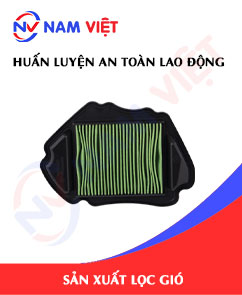
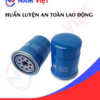
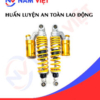



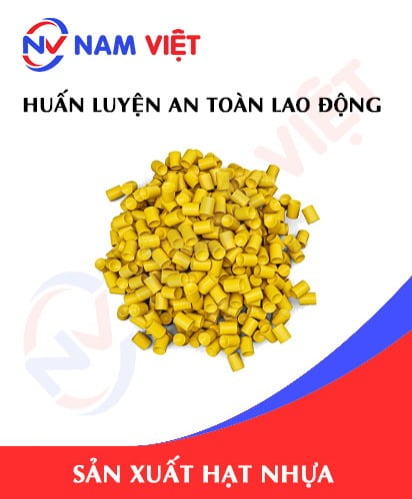
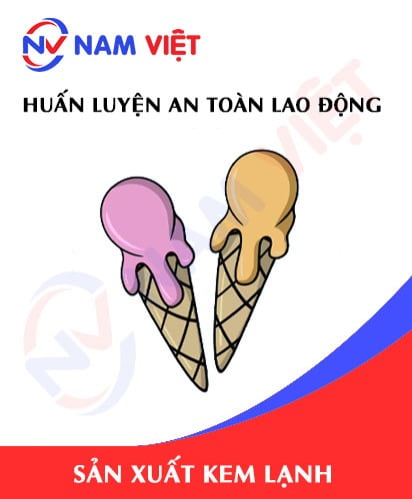
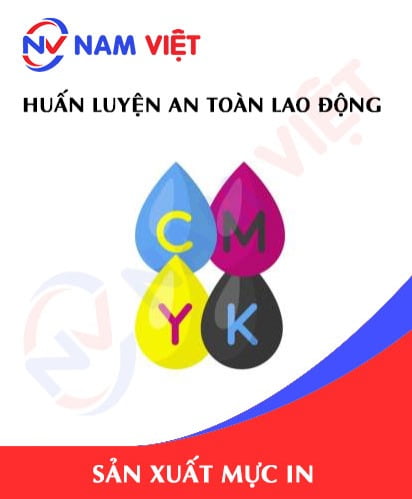

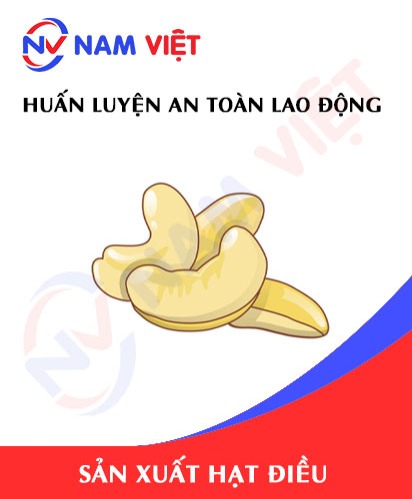
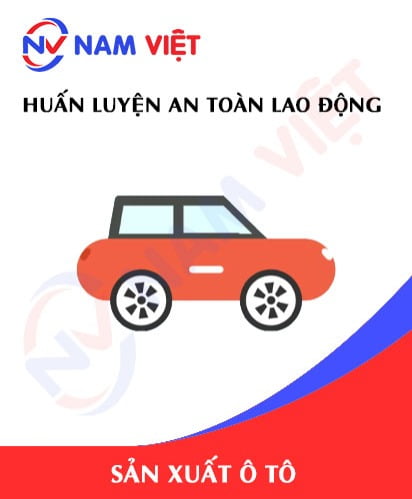
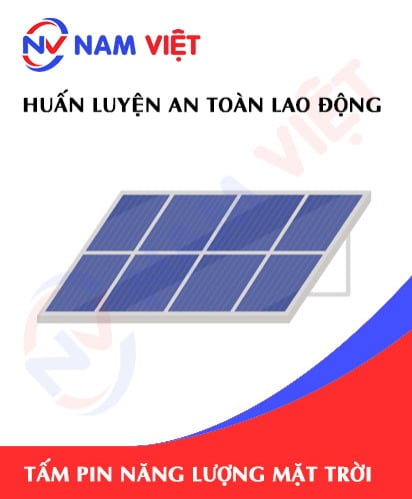
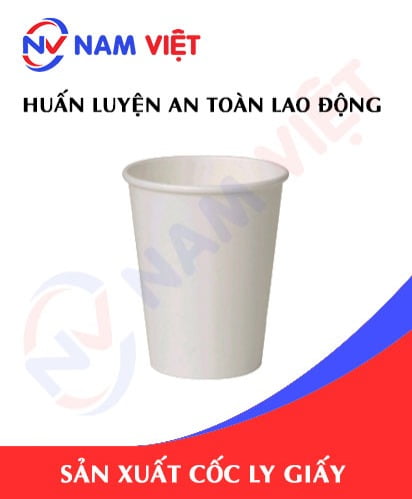
Review Occupational Safety Training for Air Filter Manufacturing
There are no reviews yet.